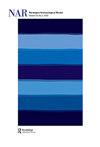北欧青铜时代和前罗马铁器时代早期的铁器——可见性、颜色对比和天体关联
IF 1.1
3区 历史学
0 ARCHAEOLOGY
引用次数: 0
摘要
本文探讨了瑞典东南部青铜器时代晚期和最早的铁器时代(公元前1100-300年)对铁的使用,重点是最后的青铜器时代和前罗马铁器时代一。目的是研究早期铁是如何被使用、评估和感知的,特别是与先前存在的青铜和黄金的关系。在某些物品类型上选择铁,比如服装属性和臂环,以及关键符号,尤其是螺旋形,表明了对其金属光泽和颜色的欣赏,与青铜形成鲜明对比。在某些情况下,这种银色的光泽被有意地利用,有时可能与天体神话中的月亮联系在一起。与月球的联系可能被来自水体的铁的起源所强调,水体被强烈的信仰所包围,并且经常是这一时期祭祀沉积的焦点。在青铜时代到铁器时代的过渡时期,人们追求的铁的品质在某些方面不同于后来在铁器时代和历史时期所欣赏的品质。有必要在当代背景下进一步考虑早期铁器,而不是将其与前罗马铁器时代晚期的“成功”改编进行比较。本文章由计算机程序翻译,如有差异,请以英文原文为准。
Iron in the Nordic Bronze Age and Early Pre-Roman Iron Age – Visibility, Colour Contrasts and Celestial Associations
This paper explores the use of iron in the Late Bronze Age and the earliest Iron Age (c. 1100–300 BC) in south-eastern Sweden, with a focus on the final Bronze Age and Pre-Roman Iron Age I. The aim is to study how early iron was used, valued and perceived, particularly in relation to pre-existing bronze and gold. Choosing iron for certain object types, such as dress attributes and arm rings, and in key symbols, notably the spiral, suggests an appreciation for its metallic shine and colour in contrast to bronze. This silvery lustre was in some cases exploited intentionally, and may sometimes have been associated with the moon in a celestial mythology. The lunar connection might have been accentuated by the origin of iron from bodies of water, which were surrounded by strong beliefs and were often the focus of sacrificial depositions in this period. The qualities sought after in iron during the Bronze Age–Iron Age transition were in some ways different from those appreciated later in Iron Age and historical times. It is necessary to further consider early iron in its contemporary setting without comparison to the ‘successful’ adaptation in the late Pre-Roman Iron Age onwards.
求助全文
通过发布文献求助,成功后即可免费获取论文全文。
去求助
来源期刊

Norwegian Archaeological Review
ARCHAEOLOGY-
CiteScore
2.10
自引率
0.00%
发文量
13
期刊介绍:
Norwegian Archaeological Review published since 1968, aims to be an interface between archaeological research in the Nordic countries and global archaeological trends, a meeting ground for current discussion of theoretical and methodical problems on an international scientific level. The main focus is on the European area, but discussions based upon results from other parts of the world are also welcomed. The comments of specialists, along with the author"s reply, are given as an addendum to selected articles. The Journal is also receptive to uninvited opinions and comments on a wider scope of archaeological themes, e.g. articles in Norwegian Archaeological Review or other journals, monographies, conferences.
 求助内容:
求助内容: 应助结果提醒方式:
应助结果提醒方式:


